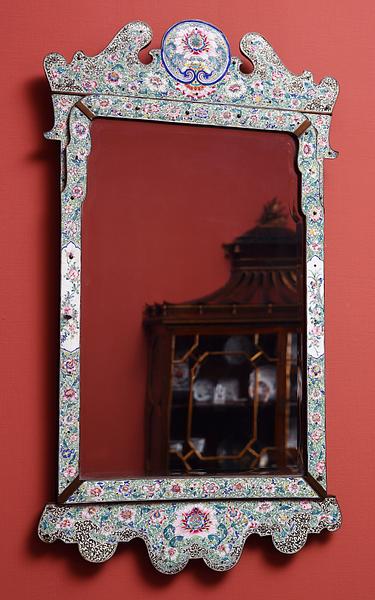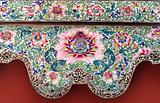Enamelling has a long tradition in China, and the early eighteenth century saw the arrival of a new technique: a surface, usually of copper or brass, would be entirely covered with a layer of enamel, upon which a decorative design was then painted in a new layer of various, vivid enamel colours.
[1] Such painted enamels are often referred to as ‘Canton enamel’ because the technique originated in the city of Canton (present-day Guangzhou) in the Guangdong Province, which had become the hub of Western trade with China from the late seventeenth century onwards.
The enamelled copper objects were heavily influenced by porcelain, which at the time was one of China’s major exports. Like porcelain, these enamels were primarily intended for export, especially to the West, where awareness of and demand for such objects grew steadily due to the innovative nature of the technique, the beautiful colours, and the fact that in form and appearance they resembled porcelain, which was a precious commodity at the time.
[2] In addition to teapots and cups, snuff bottles and jars, the enamel technique was also used for mirror frames, such as this one in The David Collection. At the time of its creation, it would have been a highly covetable luxury item.
The rectangular mirror has a frame decorated with various floral motifs in
famille rose colours: pink, blue, green, and black. The top section of the frame features curved edges in a design pointing symmetrically toward a circular medallion with a large flower in the centre. The bottom section also has curved edges and cut-outs. The mirror’s design is based on a European model as the shape of the frame has a kinship with English mirrors from the early eighteenth century.
[3]The mirror is one of an identical pair commissioned by supercargo Christen Lintrup (1703–1772) in Canton in the spring of 1741. In 1742, he brought them to Copenhagen aboard the ship “Dronningen af Danmark
”.
[4] The two mirrors were subsequently passed down through Lintrup’s family. Today, one can be seen in The David Collection, and the other is in the collection of Designmuseum Denmark.
[5]


